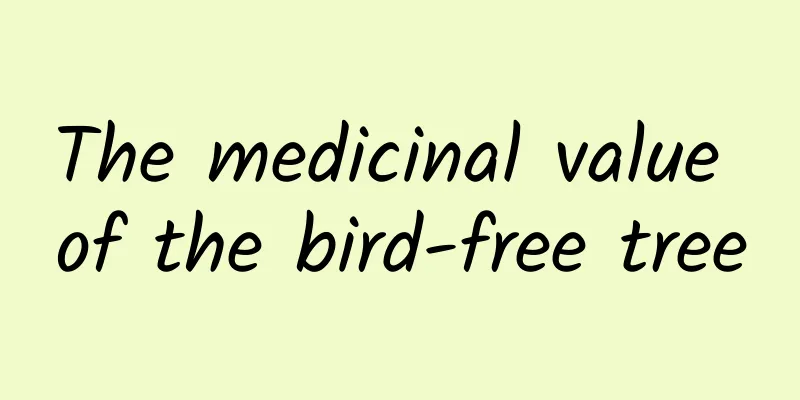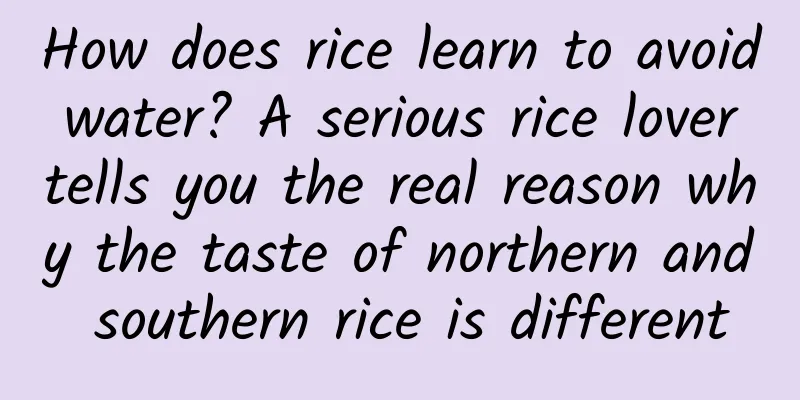The medicinal value of the bird-free tree

|
The bird-free tree is a shrub, and because it has thorns, it is called the "bird-free tree". Of course, although this tree has many thorns, the Hundred Birds Tree also has certain medicinal value. In traditional Chinese medicine, it can be used as a medicinal material. This is because the Hundred Birds Tree has many medicinal values such as dispelling wind, detoxifying, and reducing swelling. Next, I will introduce to you some relevant knowledge about why birds never alight from trees! 1. Original form A thorny shrub, sometimes vine-like, 1 to 4 meters high, with thorns less than 4 mm long, broad and flat at the base, and usually curved at the tip. Leaves are alternate; petioles are 25-40 cm long; stipules and petioles are fused at the base, with truncated or oblique apex; leaves are tripinnate, 60-100 cm long; rachis and pinnae axis are sparsely covered with fine spines, each pinna has 5-9 leaflets, each node of the rachis has a pair of leaflets, leaflets are ovate-oblong to ovate, 4-11 cm long, 2-5 cm wide, acuminate at the apex, rounded or cordate at the base, slightly oblique, sparsely covered with small spines on both sides, densely covered with short soft hairs on the underside, with irregular serrations on the edges, and about 6 pairs of lateral veins. The inflorescence is terminal, a large panicle composed of many umbels, up to 50 cm long, with short soft hairs or no hairs on the main axis and branches, and sparsely covered with hooked short spines; the umbel is 2-4 cm in diameter; the peduncle is 1-5 cm long, with spines and short soft hairs; the pedicel is 1-1.5 cm long, with fine spines and coarse hairs; the bracts are ovate-lanceolate, with long pointed tips, 2-4 mm long; the bracteoles are linear, densely hairy on the outside; the edge of the calyx tube has 5 triangular teeth; the flowers are white, about 4 mm in diameter, with 5 petals; the ovary has 5 chambers, 5 styles, separated and curved outwards. The drupe is spherical, malt-shaped, black, about 4 mm in diameter, with 5 edges and a necessary style. The flowering period is from August to September, and the fruiting period is from September to November. 2. Properties of medicinal materials The roots are cylindrical, often branched, curved, 30~45 cm long, 0.5~2 cm in diameter, with a yellowish brown or grayish yellow surface, and the cork is easy to fall off, the fallen part is dark brown or grayish brown, with longitudinal wrinkles, transversely raised lenticels and round lateral root marks. It is hard, easy to break, powdery, with dark grey bark in cross section, greyish yellow or greyish white wood, and numerous small holes (ducts). Slight smell, slightly bitter and spicy taste. 3. Efficacy and Function Dissipate blood stasis; dispel wind; promote dampness; detoxify. It is mainly used to treat damp-heat jaundice, traumatic injury, rheumatic pain, stranguria, dysentery, edema, leucorrhea, headache, epigastric pain, sore throat, mastitis, scrofula, and unknown swelling. |
<<: Medicinal value of maple fruit
>>: What are the effects and functions of soaking Rhodiola in water?
Recommend
Is there any difference between Panax notoginseng and Panax notoginseng? These things you need to know
The culture of traditional Chinese medicine is pr...
What are the benefits of drinking honeysuckle in water?
Honeysuckle is a common Chinese medicine. It not ...
Birch bark benefits and effects
Birch bark is a common Chinese medicinal material...
Millions of IPs create science and technology talents to strengthen the country丨The development of engine technology in the new energy field helps the industry's green transformation
As the most widely used power machinery with the ...
Can Ophiopogon japonicus and Sterculia lychnophora be taken together?
As a traditional Chinese medicine, Luo Han Guo ha...
Why are there so many varieties of chrysanthemums? Because they have found their "Bo Le"|Bo Lan Daily
There are many varieties of chrysanthemums , beca...
Digital Human Lights the Main Torch of the Hangzhou Asian Games! The First in Asian Games History! How Did It Happen?
On September 23, 2023, at the opening ceremony of...
There are as many as 6,000 parasites in the body. If you accidentally eat this snail, you may get seriously ill!
The weather has gradually warmed up, and the summ...
Far beyond human imagination! More than 500 million years ago, "sponges" swam on the seabed?
□ Feng Weimin Sponges are the most primitive mult...
Why is the "hairy monster" roaming the Eurasian continent "frozen" underground?
The mammoth-woolly rhinoceros group, which adapte...
What is the difference between hair dryers that cost dozens, hundreds, or thousands?
If you go to an online store to buy "hair dr...
Schrödinger's mung bean soup: red or green?
Mung beans have a long history in my country, and...
Progesterone to maintain pregnancy
Progesterone is a natural progestin secreted by t...
Suitable people and eating methods of Tiepi Fengdou
As a precious medicinal material, Fructus Officin...









